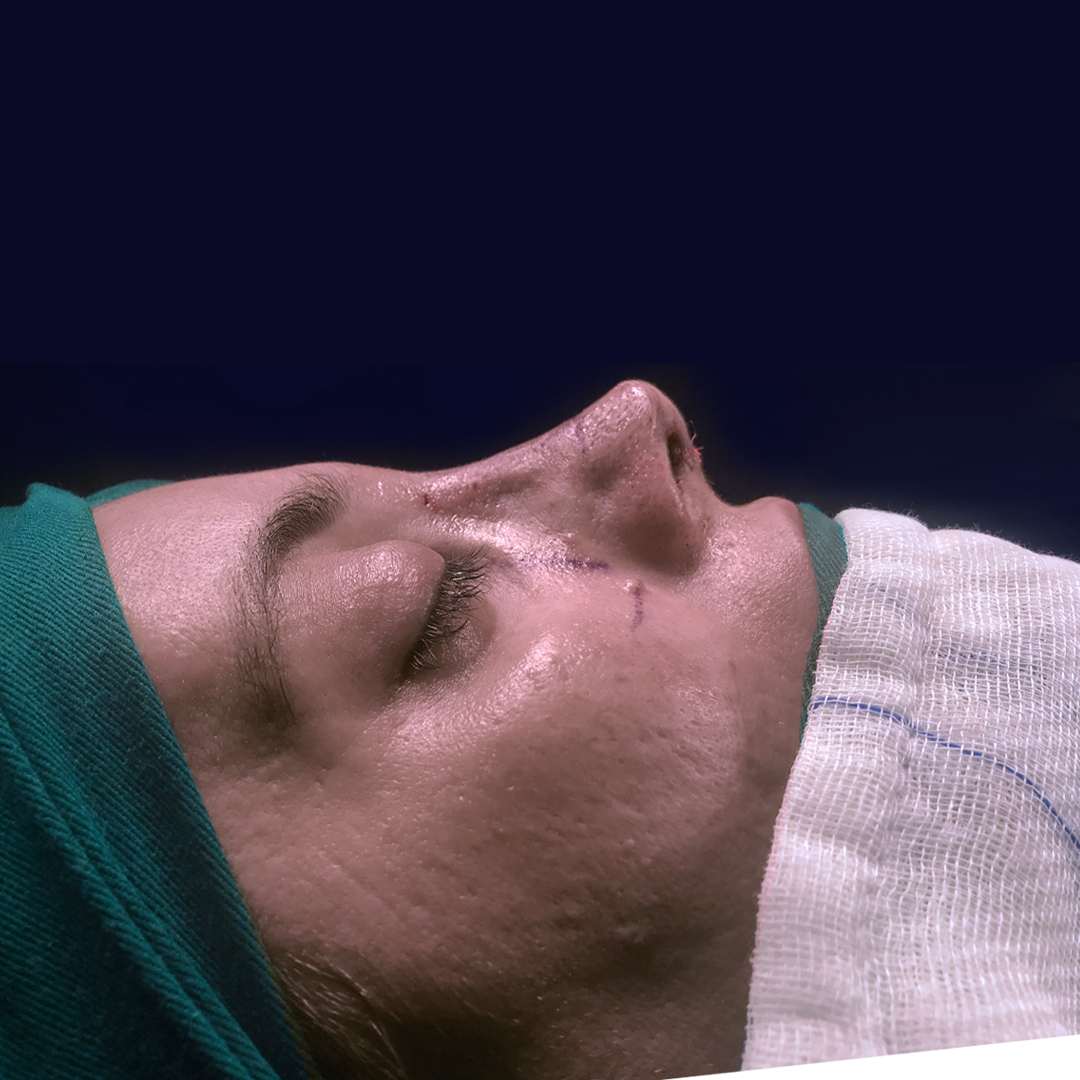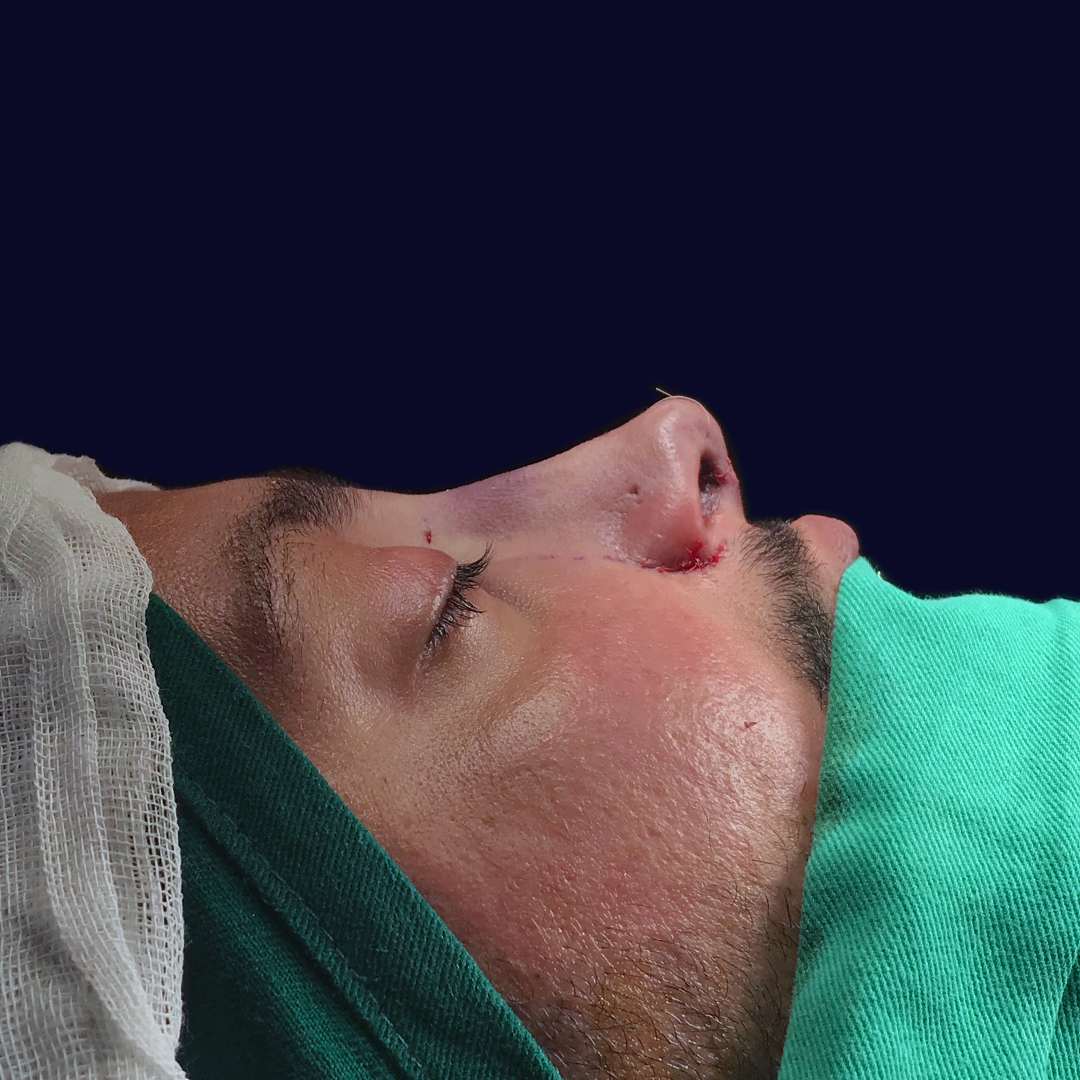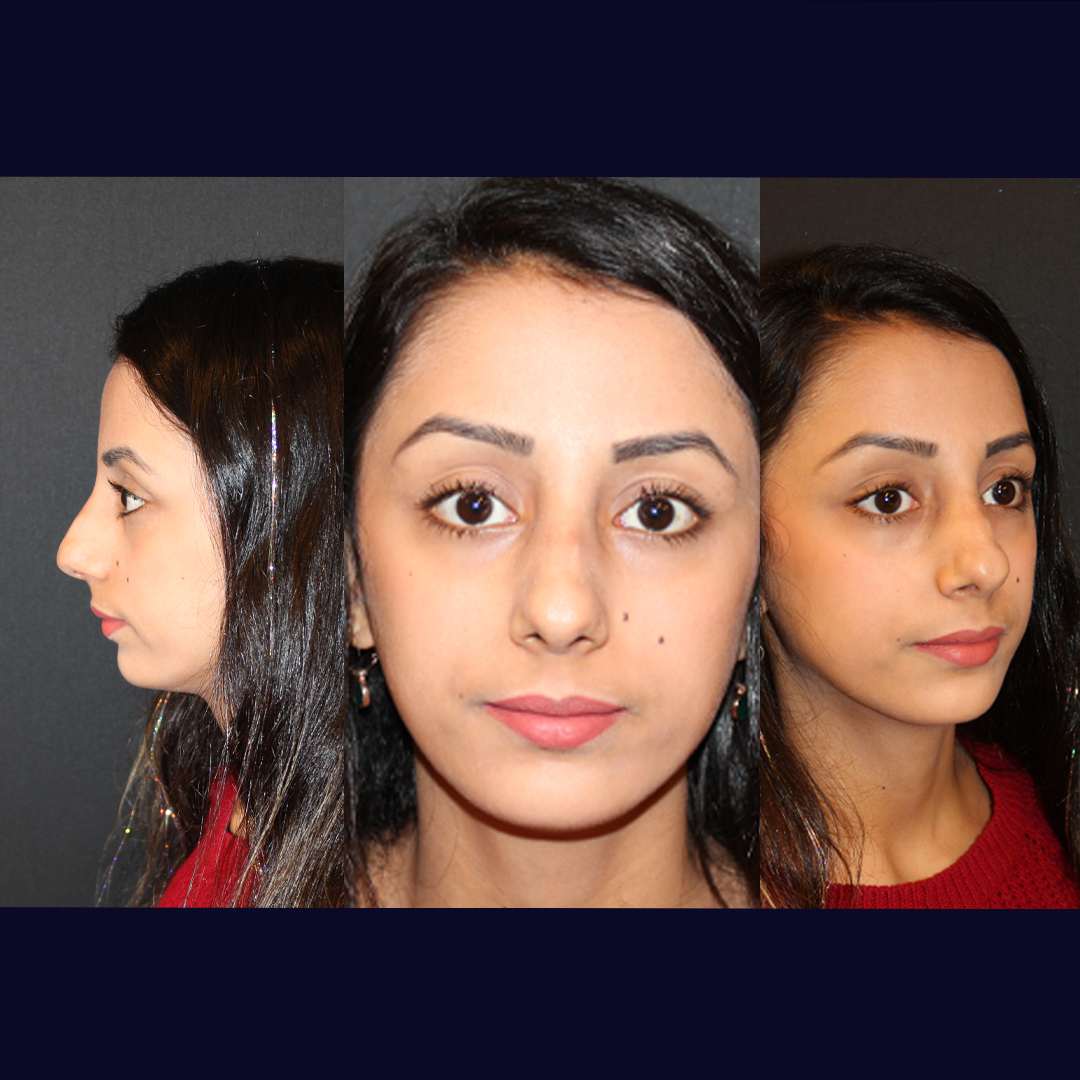
What is Rhinoplasty?
Rhinoplasty, or nose surgery, is a corrective plastic surgery procedure that can reshape your nose to improve your appearance and breathing problems.












Who Can Benefit?
If you find your self in one of the following categories as a patient, you may be a canditate for rhinoplasty.
Women and men choose rhinoplasty for a variety of reasons, which often include one or more of the following:
- Repairing injured nose
- Cosmetic nasal defects
- Reducing or increasing the size of the nose
- Changing the shape of the tip or the bridge of the nose
- Narrowing the span of the nostrils
- Changing the angle between the nose and upper lip
- Correcting birth defects
- Repairing injuries
- Relieving breathing problems
Who is A Good Candidate For Rhinoplasty?
- Physically and psychologically fit and healthy
- Bothered by the size or shape of their nose, either for cosmetic or medical reasons
- Have realistic expectations of what can be achieved by surgery
Before & The Day of Ear Surgery
Where does Prof. Dr. Fatih Irmak perform this procedure?
Prof. Dr. Fatih Irmak performs procedures at an international accredited hospital facility and state of the art surgical center equipped with the most advanced technologies available, on an outpatient basis.
What type of anesthesia is used for rhinoplasty?
Rhinoplasty may be performed under general anesthesia or sometimes intravenous sedation. It depends on conditions and surgical needs of the patient.
Rhinoplasty Surgery will Be Closed Or Open?
An open rhinoplasty involves an incision that reveals all underlying nasal structures. A closed procedure employs internal incisions that suitable for patients require less intervention. Prof. Dr. Fatih Irmak will decide the appropriate technique for your rhinoplasty after, open or closed rhinoplasty may be required depending on the patients prefferences. Scientificly it is well demonstrated that there is no difference between two tecniques.
How long does rhinoplasty surgery take?
The length of the procedure varies according to the techniques used and the extensiveness of the surgery. Generally it takes between two and three hours.
What to expect after surgery?
| Activity | When |
| Out of Bed | After 24 Hours |
| Nose Dressings Removed | 1 to 2 days after surgery |
| Packing and Splints Removed | 7 to 10 days after surgery |
| Stitches Removed | 5 to 7 Days After Surgery (If non-absorbable stitches used) |
| Back to Work | 1 to 2 weeks after surgery |
| Contact lens | As Soon as You Feel Comfortable |
| Driving | As Soon as You Feel Comfortable |
| Strenuous Activity | 2 to 3 weeks after surgery |
| Wearing Your Glasses | 3-4 months after surgery |
| Contact Sports | 6 to 8 weeks after surgery |
Things To Be Aware Of After Your Ear Surgery
- You should not blow your nose for a week or so after surgery to give the tissue a chance to heal. You should make every effort to avoid rubbing, bumping, or hitting your nose for several weeks.
- After surgery small burst blood vessels may appear as tiny red spots on the skin’s surface. These spots are usually minor but can be permanent in some cases.
- When rhinoplasty is performed from inside the nose there is no visible scarring. When the incision is made across the top of the nose or when the procedure corrects flaring nostrils, the scars are minor and are usually not visible within a few weeks of surgery.
- Internal swelling subsides very gradually, therefore, the final results of your nose surgery may not be apparent for a year or more

